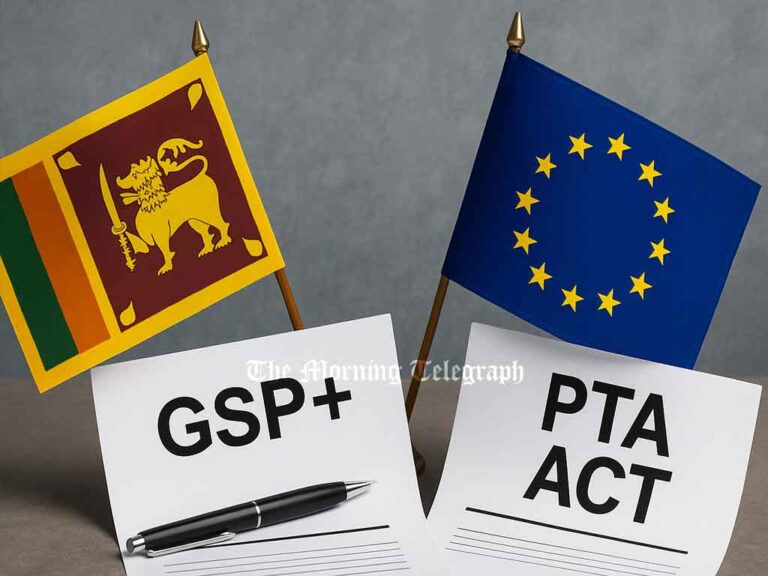
The new wave of tariffs imposed by U.S. President Donald Trump has sent shockwaves through Sri Lanka’s financial markets, causing a sharp drop in the Colombo Stock Exchange (CSE) and prompting a temporary halt in trading.
Trading on the CSE was suspended for 30 minutes on the morning of Monday, April 7, after the S&P SL20 Index—one of the market’s key performance indicators—plunged by over 5% compared to the previous trading day. At the time of the suspension, the broader All Share Price Index (ASPI) had dropped by 639.01 points, standing at 14,734.34. Meanwhile, the S&P SL20 Index had fallen by 240.45 points, settling at 4,292.90.
This translated to a 4.16% decline in the ASPI and a 5.30% fall in the S&P SL20—highlighting the market’s deep concern over the potential economic fallout of the new U.S. tariffs.
A senior official at the Colombo Stock Exchange attributed the downturn to investor fears over the U.S. trade measures. “The main reason for the drop in trading activity is the uncertainty caused by the newly imposed tariffs by the United States on Sri Lanka,” the official said. “With no clear resolution in sight, investors are reacting to media speculation, leading to a downturn in market confidence.”
The official emphasized that the lack of clarity surrounding the future of U.S.-Sri Lanka trade relations has left markets jittery. “This situation stems from the unpredictability of what lies ahead regarding these tariffs. If a resolution isn’t reached soon, it could seriously disrupt foreign investment and market activity.”
He also noted that some international investors with factories in multiple countries may adapt by shifting exports from Sri Lanka to other nations in an attempt to navigate the new tax barriers.
Meanwhile, the Sri Lankan government is taking steps to respond. Deputy Minister of Economic Development Dr. Anil Jayantha Fernando stated at a press briefing on Sunday, April 6, that efforts are underway to minimize the growing trade imbalance between Sri Lanka and the United States.
Dr. Fernando revealed that the government will present a formal proposal during a high-level meeting with American officials scheduled for Tuesday, April 8. He stressed that the 44% tariff introduced by the U.S. would impact between 80–86% of Sri Lankan exports to the country, particularly in key sectors such as apparel, rubber and plastic goods, processed foods, and jewelry.
“Our products are losing competitiveness due to these high tariffs,” he said. “The U.S. has requested a plan to reduce the trade gap, and we’re preparing to present our proposals to address that during the upcoming meeting.”
The market shutdown on April 7 was enforced under the CSE’s three-tier “circuit breaker” mechanism, designed to prevent panic-driven sell-offs:
- First Circuit Breaker: If the S&P SL20 Index falls by 5% from the previous close, trading is halted for 30 minutes.
- Second Circuit Breaker: If the index drops by an additional 2.5% after trading resumes, another 30-minute suspension is enforced.
- Third Circuit Breaker: If the index declines by another 2.5% (a cumulative drop of 7.5%), trading is halted for the rest of the day.
With market volatility rising and investor sentiment shaken, Sri Lanka now faces the dual challenge of protecting its economic interests abroad while preserving stability and confidence at home. Whether the upcoming discussions with U.S. officials will provide relief remains to be seen.




